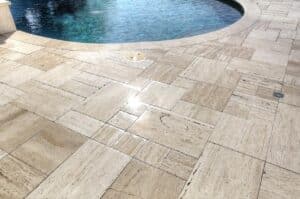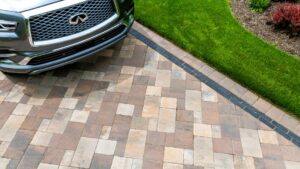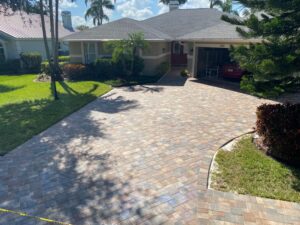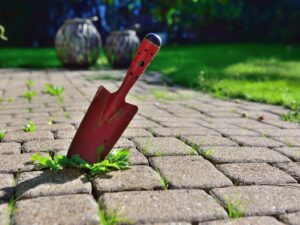Building a fire pit in your backyard can add a cozy and inviting atmosphere to your outdoor living space. However, when constructing a fire pit, it’s crucial to consider the materials you use, especially the base or filler material. For that reason, many homeowners end up asking: “Can I use paver sand for a fire pit?”.
Paver sand is a common choice for many landscaping projects – but there are always some exceptions. Is a fire pit one of these exceptions? In this article, we’ll explore the properties of paver sand and whether it’s a suitable option for your fire pit project.
Don’t miss: How much does a fire pit paver cost?
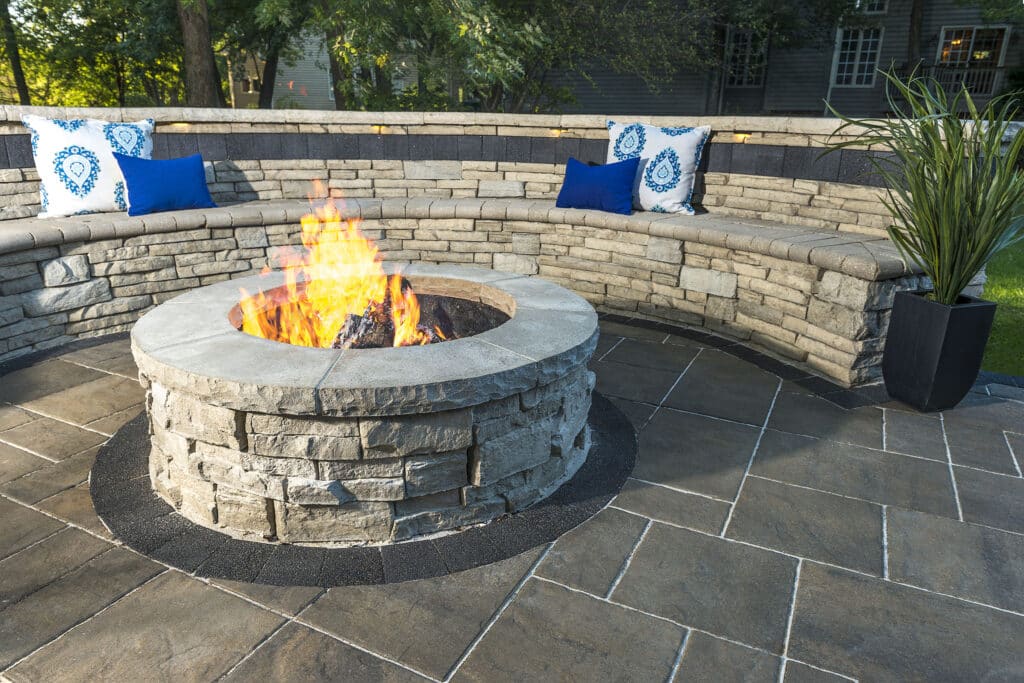
Can I use paver sand for a fire pit? What to consider?
The first thing we think of when we think about fire pits is the heat, right? Well, heat doesn’t bode well with paver sand, so using directly on it is not a good idea. However, it can be used with the peripheral pavers, given a certain safe distance.
So what you need to consider is how close your paver will be to the pit – and, while you’re at it, which type of pavers is the best for your project. On the fire pit itself, some alternative options are better than others, which we will discuss right away.
Fire bricks
Fire bricks, also known as refractory bricks, are specifically engineered to endure high temperatures. They are an excellent choice for a fire pit base due to their ability to withstand extreme heat without cracking or deteriorating.
These bricks are made from special materials that can handle the thermal stress associated with fires. Their dense composition helps in retaining and radiating heat efficiently.
Fire bricks can be arranged in various patterns and shapes, allowing you to customize the look of your fire pit. They provide a safe and long-lasting base for your fire pit, ensuring it remains stable and functional for years to come.
Gravel
Gravel is a versatile option for a fire pit base, offering benefits such as proper drainage and stability. It is an excellent choice if your primary concern is water runoff, and you want to prevent puddles around your fire pit.
Using pea gravel or larger stones is essential when choosing gravel as a base material. Smaller gravel may not provide adequate drainage, and it can become a safety hazard when heated by the fire.
Gravel bases are relatively easy to install, making them a cost-effective and accessible choice. They also create a rustic and natural appearance that complements outdoor settings.
Concrete pavers
Concrete pavers are a practical and fire-resistant alternative for constructing a fire pit base. They are designed to withstand high temperatures, making them a safe choice for this purpose.
When opting for concrete pavers, be sure to select ones that are explicitly rated for use in fire pits. These pavers are manufactured with the necessary properties to endure the heat generated by a fire.
Concrete pavers come in various shapes, sizes, and colors, allowing you to create a fire pit design that matches your outdoor aesthetics. They are easy to install and provide a stable surface for your fire pit.
Fire pit liner
If you prefer a hassle-free and efficient solution, consider using a pre-made fire pit liner or insert. These liners are specifically designed to contain fires safely and efficiently.
Fire pit liners are made from durable materials like steel or cast iron, which can withstand the high temperatures produced by a fire. They often come with built-in features like air vents and drainage holes to enhance fire performance and safety.
Using a fire pit liner eliminates the need for extensive base construction, making it a convenient option for those looking for a quick setup.
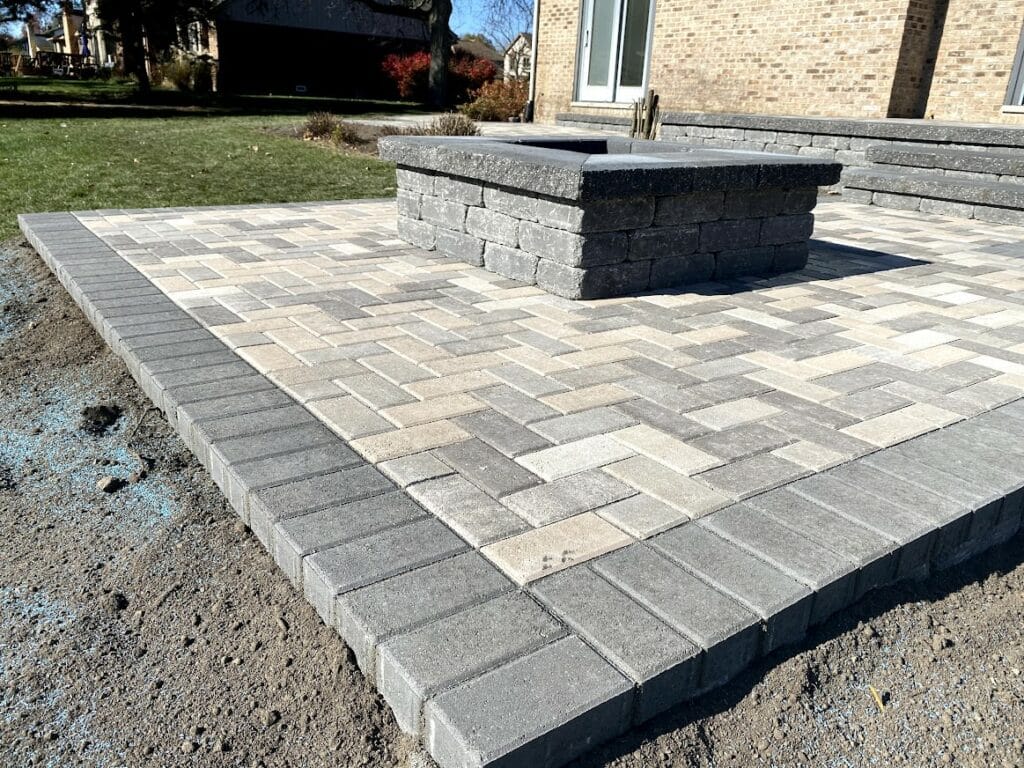
Fire pit maintenance
Maintaining a paver fire pit is essential to ensure its safety, longevity, and aesthetic appeal. Regular maintenance can help prevent issues such as uneven settling, weed growth, and damage to the pavers.
Regularly clean the pavers to remove dirt, debris, and ash. Use a broom, leaf blower, or a pressure washer on a low setting to clean the surface. Avoid using high-pressure settings on the pressure washer, as it can damage the pavers.
Prevent weeds from growing between the pavers by using weed barriers or applying weed killer. You can also manually remove weeds as they appear.
Regularly inspect the pavers for cracks, chips, or loose pieces. Replace any damaged pavers promptly to prevent tripping hazards and maintain the structural integrity of the fire pit.
Over time, pavers may settle unevenly, causing an unstable surface. If you notice any unevenness or sinking, lift and relevel the affected pavers. Add or remove sand or gravel as needed to achieve a level surface.
Clean out ash and embers from the fire pit after each use. Ensure there are no flammable materials, such as leaves or debris, near the fire pit. Check for any cracks or damage in the fire pit liner or bowl, and replace it if necessary.
Keep the area around the fire pit well-maintained. Trim overhanging branches and bushes to prevent sparks from igniting nearby vegetation. Make sure the area is free of combustible materials.
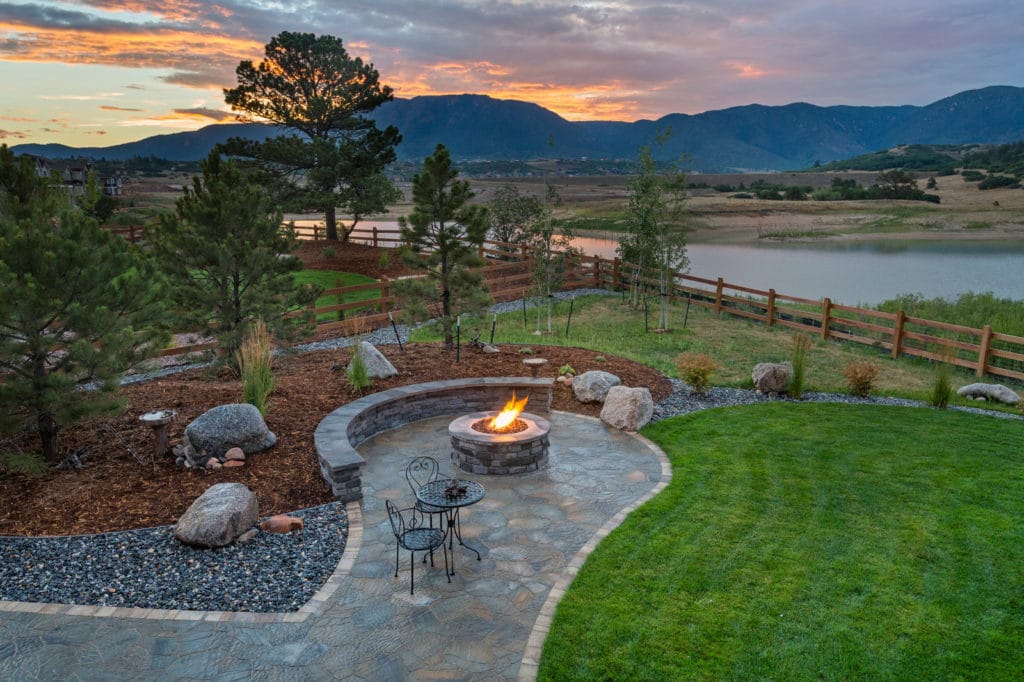
Professional fire pit installation
So, as we explained, while paver sand is a versatile material for many hardscape projects, it is not suitable for the main fire area of a fire pit due to its lack of heat resistance and potential safety concerns.
Instead, opt for materials like fire bricks, gravel, concrete pavers, or a dedicated fire pit liner to ensure the safety and durability of your fire pit. Always prioritize safety when designing and building your outdoor fire pit to enjoy cozy evenings without worry.
And when it comes to fire pits, every project is unique, so maybe your best course of action is to hire professional hardscape contractors to help you with your project.
And if you happen to be around the Sarasota and Manatee counties, in, FL, we here at S&S Pavers can gladly offer that help for you.
You can contact us anytime for a consultation, so we can start helping you with your fire pit project today.

